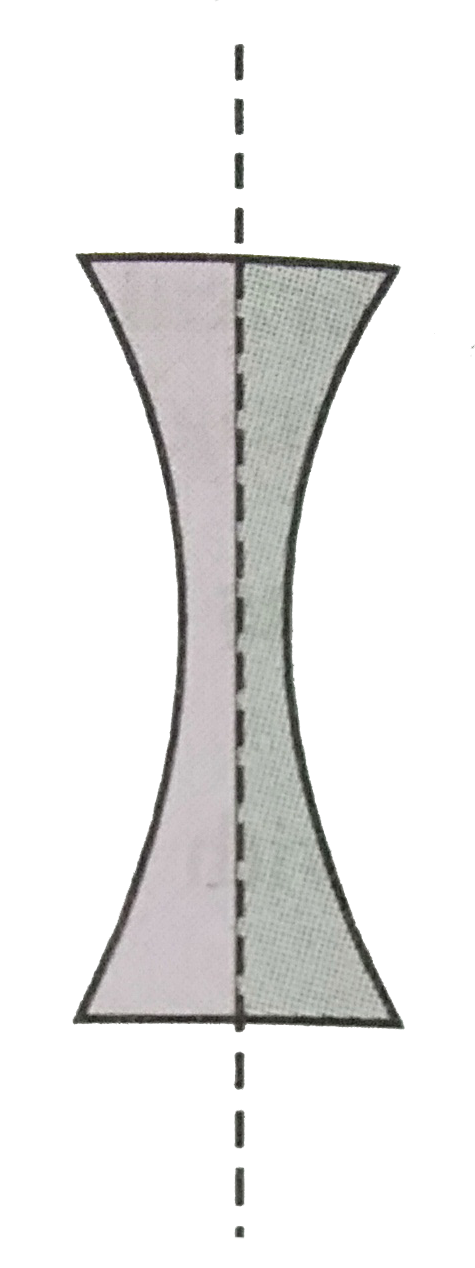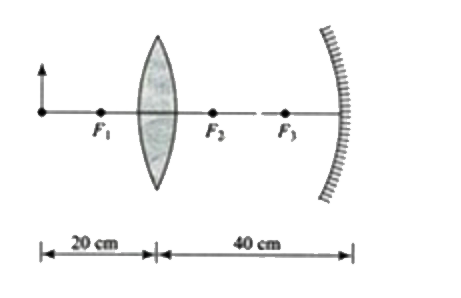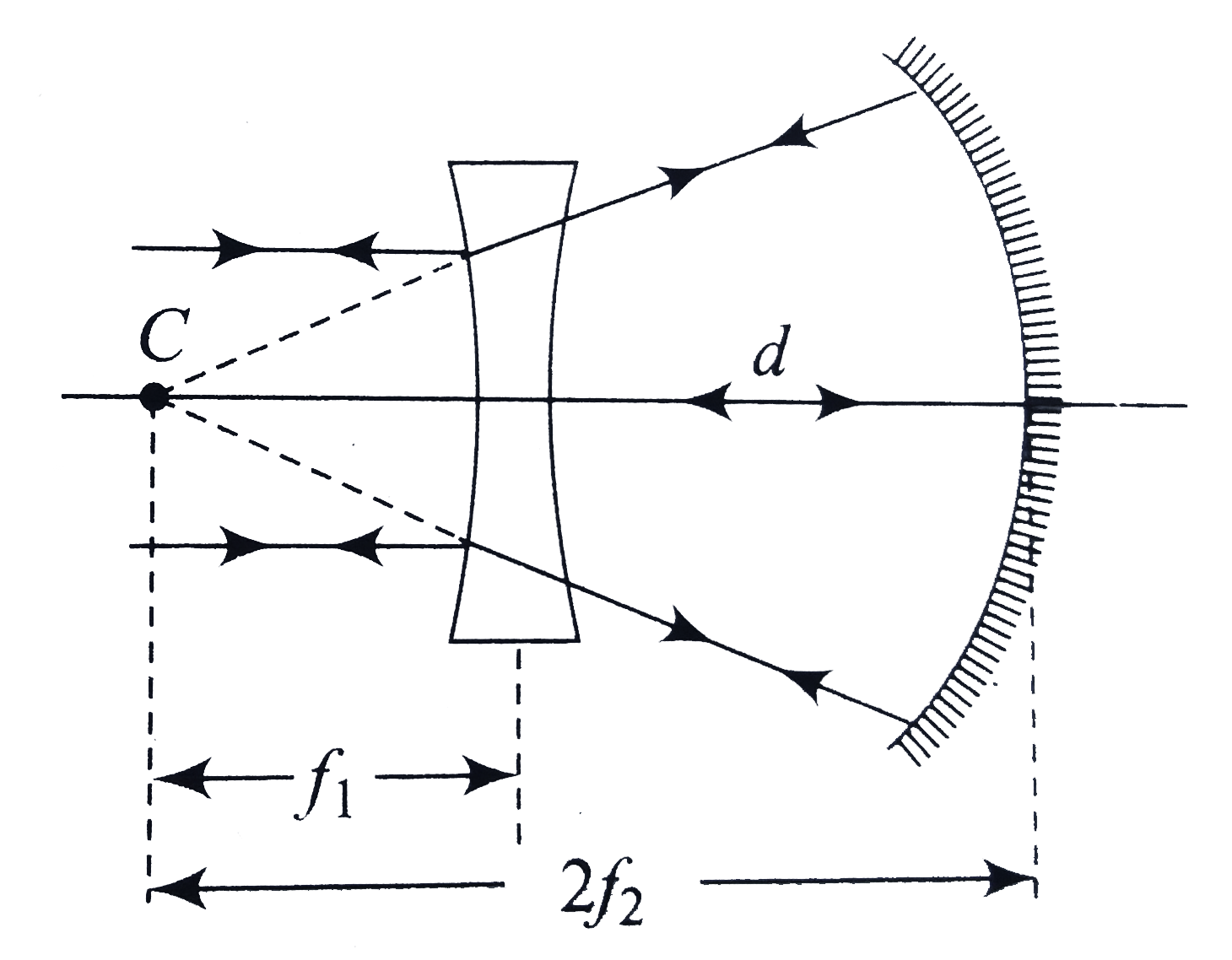A diverging lens of focal length f1 is placed in front of and coaxially with a concave mirror of foacl length f2. Their separation is d. A parallel beam of light incident on the lens returns as a parallel beam from the arrangement. Then,
the beam diameters of the incident and reflected beams must be the same
d=2|f2|−|f1|
d=|f2|−|f1|
if the entire arrrangement is immersed in water, the conditions will remain unaltered
The correct Answer is:A, B
Topper's Solved these Questions
- GEOMETRICAL OPTICSBOOK - CENGAGE PHYSICSCHAPTER - GEOMETRICAL OPTICSEXERCISE - Assertion-Reasoninig
2 Videos
- GEOMETRICAL OPTICSBOOK - CENGAGE PHYSICSCHAPTER - GEOMETRICAL OPTICSEXERCISE - Linked Comprehension
51 Videos
- GEOMETRICAL OPTICSBOOK - CENGAGE PHYSICSCHAPTER - GEOMETRICAL OPTICSEXERCISE - Subjective
26 Videos
- FRICTIONBOOK - CENGAGE PHYSICSCHAPTER - FRICTIONEXERCISE - QUESTION BANK
1 Video
- GRAVITATIONBOOK - CENGAGE PHYSICSCHAPTER - GRAVITATIONEXERCISE - Question Bank
39 Videos
Similar Questions
Knowledge Check
A converging lens of focal length f1 is placed in front of and coaxially with a convex mirror of focal length f2. Their separation is d. A parallel beam of light incident on the lens returns as a parallel beam from the arrangement, Then,
Athe beam diameters of the incident and reflected beams must be the sameBd=f2−2|f2|Cd=f1−|f2|Dif the entire arrangement is immersed in water, the conditions will remain unalteredA concave lens of focal length 20 cm placed in contact with ah plane mirror acts as a convex mirror of focal length
A10 cmB40 cmC60 cmD20 cmA convex lens of focal length 20cm and a concave lens of focal length f are mounted coaxially 5cm apart. Parallel beam of light incident on the convex lens emerges from the concave lens as a parallel beam. Then, f in cm is
A35B25C20D15
A diverging lens of focal length F is cut into two idential parts, each forming a plano concave lens, Fig. What is the focal length of each part ?

View SolutionA convex lens of focal length 'f' is placed in contact with a concave lens of the same focal length. The equivalent focal length of the combination is
View SolutionA convex lens of focal length 100 cm and a concave lens of focal length 10 cm are placed coaxialiy at a separation of 90 cm. If a parallel beam of light is incident on convex lens, then after passing through the two lenses the beam
View SolutionA biconvex lens of focal length f1=10cm is placed 40 cm in front of a concave mirror of focal length f2=7.50cm, as shown in the figure. An object, 2 cm high, is placed 20 cm to the left of the lens.

The image formed by the lens, as rays travel to the right, is
View SolutionTwo converging lenses of focal lengths f1=10cm and f2=20cm are placed at some separation. A parallel beam of light is incident on first lens. Then,
View Solution
